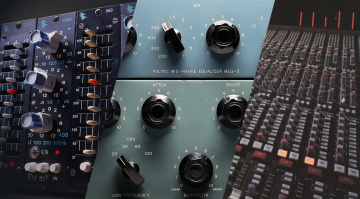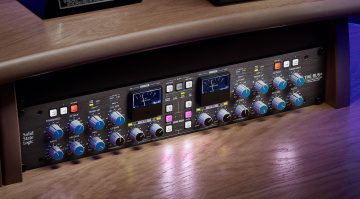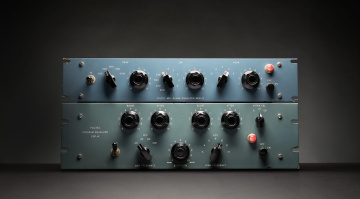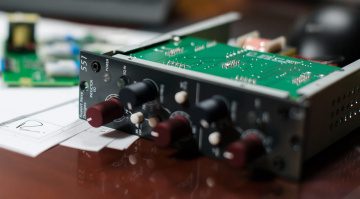EQ Techniques: Neve vs Pultec vs API vs SSL
Learn how to use EQs by understanding the classic designs.
Understanding EQ techniques and types is an essential part of music production to help you achieve clarity and detail at any stage of the process.
In this Article:
EQ Techniques
Whether you’re trying to use EQ while tracking, during the songwriting and production process, or while mixing, it’s an absolutely essential audio tool. Because of their specific circuit designs, different EQ types suit different stages of the music production process, and their unique sonic character brings out something special when paired with particular instruments.
Neve, Pultec, API, and SSL are legendary audio manufacturers responsible for creating EQs that have their own distinctive flavour, which allows you to approach tone shaping in different ways. Over the years, these classic designs have become studio standards from their use in the making of so many of our favourite records. These iconic EQs have also influenced the way we design plugins and hardware EQs today. So, let’s find out where we can use them in a home studio environment, with some techniques that can be applied with plugins or hardware versions of these four iconic EQs.
EQ Techniques: Neve EQ – Broad Strokes
Neve EQs like the 1073, 1081, and 31102 became some of the most desired EQs because of their broad, musical filter contours and the saturation that the transformers imparted onto the signals. Even when boosting frequencies rather fiercely, the feel of these EQs comes across in a smooth way that enhances sources beautifully.
Characteristics:
- Wide Q curves that maintain the thickness of the signal
- Smooth high-frequency range
- Powerful low-end presence
- Transformer sound adds harmonic depth

Neve EQ Techniques:
Vocals:
- Use a 12 kHz high shelf for airy detail
- 2-4 dB cut between 220–360 Hz for clarity
If required, a slight 1.6 kHz boost for added intelligibility, but pay attention to the range of the vocal and where it’s sitting in the mix.
Bass Guitar:
- Boost 60–110 Hz to thicken
- 700 Hz adds harmonic definition
A Neve EQ is especially effective for adding low-end punch, but don’t overdo it. Go for subtle warmth and let the transformer add those rich harmonics to give the sound more body.
Mix Bus:
- A slight 12 kHz high-shelf boost for gloss
- If necessary, boost 80 Hz for warmth
- A 2-4 dB cut at 300 Hz can increase clarity
The desired effect of a Neve EQ on the mix bus is subtle, creating a rich cohesiveness.


EQ Techniques: Pultec EQ – Wide Musical Warmth
Introduced way back in the early 1950s, the Pultec EQP-1A is one of the most famous EQs ever designed, loved for its simple operation and warm tube sound. With its passive circuitry, the capacitors and coils produce lightly overemphasized contours that interact with the signal in non-linear ways.
Characteristics:
- The passive design produces smooth curves
- Warmth comes from the tube gain stage
- Wide shelves are perfect for bus processing
- The interaction between the boosting and attenuation produces unique resonances

Pultec EQ Techniques:
Mix Bus (Pultec trick):
- Add a 1-3 dB boost at 60 Hz
- Then add a slight cut at 60 Hz
Overall, the low-end should feel tighter, with added punch and reduced boominess, which is ideal for beat-orientated music styles.
High-End Air and Detail:
- Add 10–12 kHz boost
- Use the bandwidth control to soften
With the Pultec EQ, you can introduce a silky high-frequency sheen, suitable for vocals, cymbals, and the mix bus.
Kick Drum:
- Add power with a boost at 30 or 60 Hz
- Reduce mud with a 200–400 Hz cut
- Emphasize the click with a 10–12 kHz boost on the MEQ-5
The Pultec EQ has a magical relationship with kick drums, which we’ve heard on so many famous records.

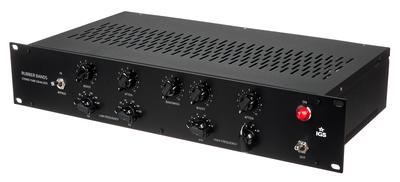
EQ Techniques: API EQ – Colourful Energy
API EQs such as the legendary 550A, 550B, and 560 graphic EQs are renowned for introducing midrange punch and harmonic detail, which comes from the custom-designed transformers and the 2520 op-amp. Like SSL EQs, there is proportional-Q interaction with the boosts and cuts, but this is more pronounced with API EQs, making them extremely musical tools to work with.
Characteristics:
- Midrange presence and colour
- Transient punch and tightness
- Saturation from the op-amp excites the high-end
- The limitation of fixed frequency bands encourages decisive creative operation.
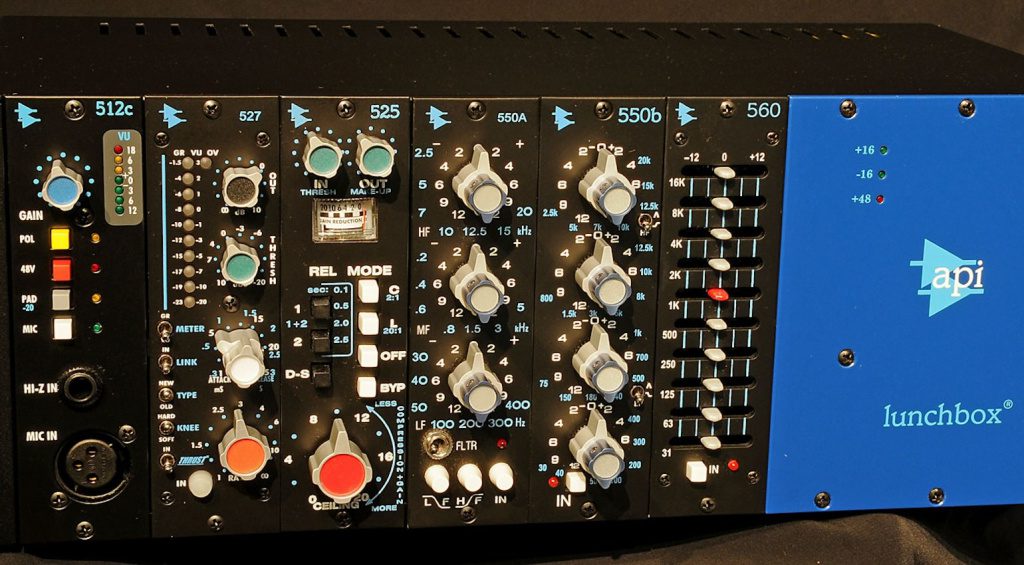
API EQ Techniques:
Electric Guitars:
- A 2–4 kHz boost adds bite
- Boost 100–200 Hz for thickness
- A 400–600 Hz cut reduces boxiness
Because of its proportional Q factor, the API EQ is ideal for getting that gritty rock guitar sound that jumps out of the speakers.
Rock Vocals:
- Boost 3–5 kHz push for aggression
- Brighten with a slight 10–12 kHz boost
- Cut the low mids around 250 Hz
The API EQ gives vocals urgency, with slight saturation, ideal for rock and indie.
Drum Enhancements:
- A 100 Hz boost for kick drum weight
- Boost the snare at 5 kHz to emphasize the snap
- Tighten the toms with a 200 Hz cut
API EQ introduces a unique, punchy presence, which really suits any percussive sounds.


EQ Techniques: SSL EQ – Like A Surgeon
The SSL EQs from their prestigious 4000 and 9000 series consoles are known for that punchy, modern sound. With a design that offers bell/shelf switching as well as variable and proportional Q, the SSL EQs provide a balance of precise sound sculpting and musical character.
Characteristics:
- Proportional Q means the bands narrow as you boost or cut
- Pleasing high-end remains refined, even with aggressive boosting
- Midrange clarity and precision with variable, proportional Q-factor
- Flexibility of high and low shelves with switchable bell mode

SSL EQ Techniques:
Drum Punch:
- A 5–8 kHz boost on snare to emphasize snap
- A slight boost at 60–80 Hz on kick for punch
- Boost 1.5–3 kHz for mid-range presence
SSL EQs are great for carving up drums because of their responsiveness and detail, even with aggressive settings.
Vocal Cut Through:
- Boost 5–7 kHz for added presence
- A slight cut at 200–300 Hz to reduce mud
- Try a low shelf dip around 100 Hz for less boom
The slightly hyped high-frequency definition of SSL EQs adds presence to vocals without the tinny character of cleaner EQs.
Modern Mix Bus:
- Slight boost with an 8 kHz shelf to add brightness
- Boost 80 Hz shelf for added punch
- A precise cut at 300–500 Hz for midrange clarity
Using SSL EQ on your mix bus can give the track that “finished” sound without any noticeable phasing issues.


EQ Techniques: Which EQ Should I Use?
When we understand the unique sonic characteristics of each EQ, it’s easier to know when to choose the best tool for the job.
- Neve: Midrange thickness and high-frequency polish for warmth and classic musicality.
- Pultec: Warm smooth tone shaping and enhancement with unique low-end sculpting capabilities.
- API: Energetic punch with added harmonic detail, especially in the midrange.
- SSL: Precise modern sound with clarity and focus.
EQ Techniques: Using All Four EQs at Once
For a modern indie-rock style song with recorded drums, vocals, electric guitars, bass, and synths, we can apply techniques to get the most from all four of these famous EQ types.
Kick (Pultec and API):
- Pultec boost/attenuation trick at 60 Hz adds controlled thump
- API 100 Hz boost adds extra punch
- API 3–5 kHz boost emphasizes the click
Snare (SSL):
- 7 kHz boost to add snap
- 250 Hz cut reduces boxiness
Bass (Neve):
- 60 Hz boost adds weight
- 700 Hz lift for clarity
Guitars (API):
- 3 kHz lift for bite
- Cut between 400–500 Hz for midrange clarity
Vocals (Neve + SSL):
- Neve 12 kHz shelf for high-end gloss
- SSL slight 1.5–3 kHz boost for added presence and detail
Mix Bus (Pultec):
- Add a 10 kHz shelf for air
- Use the 60 Hz trick to tighten the low-end
By combining the qualities of these different EQs, you get a rich, complex sound with punch, definition, and harmonic colour in the right places.
More about EQ Techniques:
*Note: This article contains affiliate links that help us finance our site. Don’t worry: the price for you always stays the same! If you purchase something through these links, we receive a small commission. Thank you for your support!




